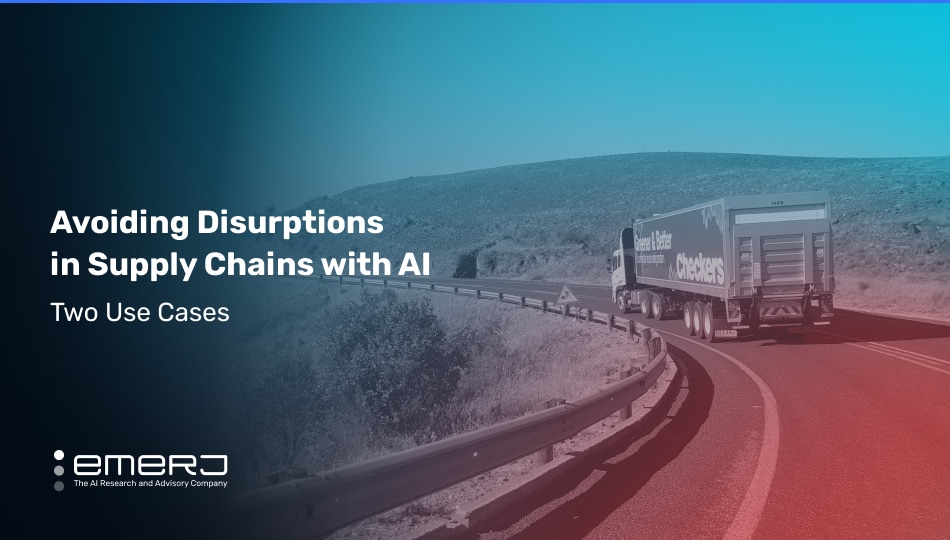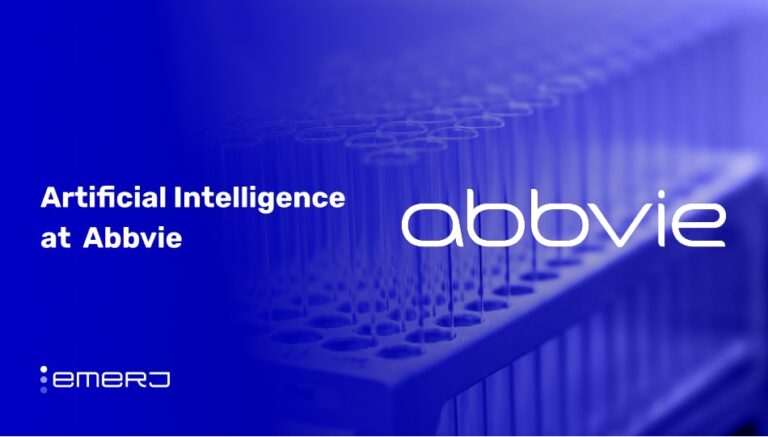This article is co-authored by Rudrendu Paul
Global supply chains face mounting disruptions – pandemic aftershocks, geopolitical conflicts like the Ukraine war, climate events like flooding in Malaysia, and cyber-attacks – all of which have created massive bottlenecks. According to the World Economic Forum, global supply chains are facing the worst shortages in 50 years due to the pandemic and the war in Ukraine.
The disruptions could slow down industrial production by 4-5% in the next year or two. It is believed that it will be at least another year of low growth, high prices, and bare shelves before the disruptions end. Last year, the IMF reported that supply chain disruptions, together with increasing raw material prices, are also a reason for the rise of consumer prices.
Logistics and supply chain leaders are adopting AI-powered predictive analytics to navigate risks proactively and minimize their impact. Once risks are flagged, AI can simulate mitigation strategies to prescribe robust, economical responses – like altering shipment batch sizes or diversifying supplier mix. Leading organizations have successfully optimized inventory and proactively adjusted stock levels based on AI forecasts during volatile demand swings.
By continuously analyzing historical data, AI models can identify patterns predictive of potential disruptions. Cloud platforms expedite the building of custom algorithms tailored to supply chains using enterprise data.
In this article, we will examine two recent AI use cases in the supply chain space:
- Real-time views of supply chain disruptions: Predictive analytics for providing near real-time global visibility and precise classification of disruptions, significantly enhancing proactive risk management and resilience across its global supply chains.
- Predicting cargo no-shows: Leveraging machine learning models to predict when shipments fail to deliver with at least 90% accuracy, improving cargo space utilization and fuel efficiency while mitigating revenue losses.
Use Case #1: Real-time Views of Supply Chain Disruptions
Figure 1: DHL’s Résilience360 platform for risk assessment and optimizing supply chain disruptions (Source: Michael Huth)
DHL was facing many of the same challenges for managing global supply chains described in the introduction to this article due to various disruptions such as climate change impacts, supplier failures, and geopolitical issues like trade wars. According to DHL’s earnings report for the second quarter of 2022, the company experienced a decrease in revenue of €4.8 billion in their Global Forwarding, Freight division, which was attributed to a reduction in freight volume caused by various factors mentioned earlier.
Additionally, the absence of real-time visibility into these supply chains hampers the ability to predict, assess, and mitigate risks efficiently. Further complicating matters is the inefficient risk classification system inside the Resilience 360 platform, which struggles to accurately classify global disruptions because of the vast amount of data and the absence of advanced analytical tools.
Before the integration of AI into DHL’s supply chain workflows, there was an extensive reliance on manual processes to monitor and manage supply chain disruptions. According to a use case study report directly from DHL, manual monitoring processes were coupled with a reactive approach, where disruptions were addressed only after they occurred, often resulting in delayed corrective actions.
Furthermore, there was difficulty in categorizing and prioritizing these disruptions due to the absence of precise classification mechanisms.
Figure 2: DHL’s Résilience360 platform for risk identification across multiple dimensions. (Source: Supply & Demand Chain Executive)
Figure 3: Comprehensive risk evaluation of a node within DHL’s supply chain through risk scores. (Source: Michael Huth)
With AI intervention, DHL claims to have incorporated advanced capabilities into their Resilience360 platform, leveraging machine learning and natural language processing to enhance risk classification.
These features were further enhanced by the implementation of AI algorithms in the Incident Monitoring module, which is designed to analyze millions of risk intelligence data sources daily. Additionally, DHL claims to utilize predictive analytics that enables the company to anticipate potential disruptions and proactively manage risks.
Figure 4: Aligning incident data with DHL’s supply chain attributes to pinpoint impacted supply chain components (Source: Michael Huth)
After the integration of AI into the workflow, DHL claims there was a marked enhancement in the company’s ability to manage supply chain risks proactively, as potential disruptions could be identified well in advance.
By leveraging a more precise classification system of global disruptions, DHL was better prepared to reinforce its supply chains with the formulation of more effective response strategies. The self-learning capabilities of AI played a pivotal role in refining the platform’s efficiency, as it continuously learned from user behaviors and fine-tuned the relevancy of subsequent disruption alerts.
Post-AI implementation at DHL:
- The Resilience360 platform experienced rapid growth, expanding its user base to over 13,000 globally, and attained near real-time global visibility into supply chain risks.
- Empowered swift corrective actions to ensure timely deliveries despite risks.
- Increased overall supply chain resilience against natural disasters, cyber threats, and regulations.
Use Case #2: Predicting Cargo No-Shows
According to a use case study report from NVIDIA, American Airlines grappled with a pressing business problem where many scheduled cargo shipments failed to arrive at their scheduled warehouses. The inconsistency not only led to a significant loss of revenue but also wreaked operational havoc for the airline.
Figure 5: American Airlines’ new process for aggregating data to book cargo flights more efficiently. (Source: NVIDIA)
Figure 6: Results of American Airlines’ new cargo flight booking system. (Source: NVIDIA)
The unpredictability associated with cargo arrivals further disrupted the cargo hold layouts, adversely affecting the aircraft’s fuel efficiency. Moreover, the uncertainty surrounding existing bookings compelled the airline to decline other potential shipments, representing missed opportunities for additional revenue.
Before the implementation of AI, the workflow for cargo bookings at American Airlines is described in the case study report as being characterized by a typical booking window of around ten days prior to departure. Without the aid of a predictive mechanism, the process of confirming cargo arrivals was manual and had low efficiency. The absence of precise forecasting meant that the cargo team was left in a reactive mode, addressing no-shows with limited time at their disposal to either reorganize or resell the available space.
In response to the challenges, American Airlines turned to an AI-based solution. They employed H2O4GPU, an open-source, GPU-accelerated machine learning package, to develop a model that could predict the likelihood of a no-show based on historical booking data. To facilitate the AI implementation, the airline made use of Z by HP data science workstations, which were powered by Nvidia’s Quadro GPUs.
The arrangement setup accelerated the computation and training process by a factor of ten when compared to traditional CPUs. The resulting model boasted a commendable accuracy rate of 90% and was executed three days prior to each cargo flight, allowing the airline to pinpoint high-risk no-show bookings and proactively engage with customers for confirmation.
After the implementation of AI, the workflow at American Airlines underwent a significant operational shift, as described in the NVIDIA case study report. The AI model’s capability to pinpoint high-risk no-shows empowered the team to proactively engage with customers for confirmation, facilitating a more strategic approach to cargo layout planning.
The foresight into potential no-shows resulted in enhanced cargo space utilization and improved fuel efficiency, thanks to the optimization of cargo hold layouts. Additionally, the advanced AI capabilities helped to introduce a fair booking policy, allowing free cancellations up to 48 hours before departure, further alleviating the no-show challenge.
The AI initiative undertaken by American Airlines permeated to realize benefits across multiple areas of business:
- Enabling the airline to reclaim space that would have otherwise remained unutilized due to no-shows, averting potential losses of revenue amounting to more than $10M.
- Elevating customer engagement and the overall service experience through the introduction of a fair booking policy, permitting free cancellations up to 48 hours prior to departure.
- According to NVIDIA, the machine learning model at the heart of this business transformation boasted an impressive prediction accuracy of at least 90 percent, markedly improving the capability to anticipate no-shows.
Furthermore, by running the AI models three days ahead of each cargo flight, American Airlines could adeptly manage high-risk no-show bookings, thereby optimizing both cargo space utilization and fuel consumption.
























